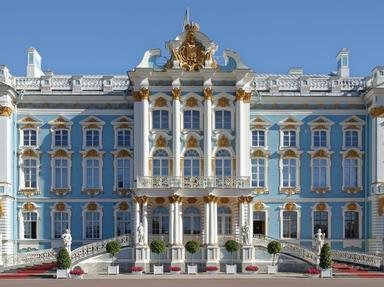Quiz Answer Key and Fun Facts
1. In 988 AD this Grand Duke of Kiev converted to Christianity (Greek Orthodox). Which man was it?
2. On Nov 12, 1472 AD this Grand Duke of Muscovy married Zoe, niece of Constantine XI, the last Byzantine Emperor. Which man was it?
3. On Jan 16, 1547 AD this Grand Duke of Muscovy was crowned with the title of "Czar" (or Tsar). Though it had been used unofficially by earlier dukes this was the first official coronation bestowing the title. Which man was it?
4. On Jan 26, 1589 AD the Patriarchate of the Russian Orthodox Church was created. Who was czar at the time?
5. In 1612 AD the Zemsky Sobor (Assembly of the Land) elected this man as czar bringing to an end the "Times of Troubles." Which man was it?
6. In 1696 AD Czar Peter I, the Great, became sole ruler of the Russian Empire with the death of this man, his half-brother and co-ruler. Which man was it?
7. Czar Peter III was deposed in a palace coup on Jun 28 and then murdered on Jul 6, 1762 AD. His German wife was proclaimed the reigning Czarina. Who was his wife?
8. The Decembrist Revolt (Dec 14, 1825 AD) occurred the very night this czar officially assumed the throne. Which czar was it?
9. This czar was hailed as the "Czar-Liberator" after he issued the Edict of Emancipation (Mar 3, 1861 AD) which abolished serfdom throughout the Russian Empire. Which czar was it?
10. On Sunday, Jan 9, 1905 AD, Father Gapon led approx. 200,000 unarmed workers in a peaceful march on the Winter Palace (in St. Petersburg) to petition this czar for social and political reforms. Which czar was it?
Source: Author
hund
This quiz was reviewed by FunTrivia editor
bloomsby before going online.
Any errors found in FunTrivia content are routinely corrected through our feedback system.
